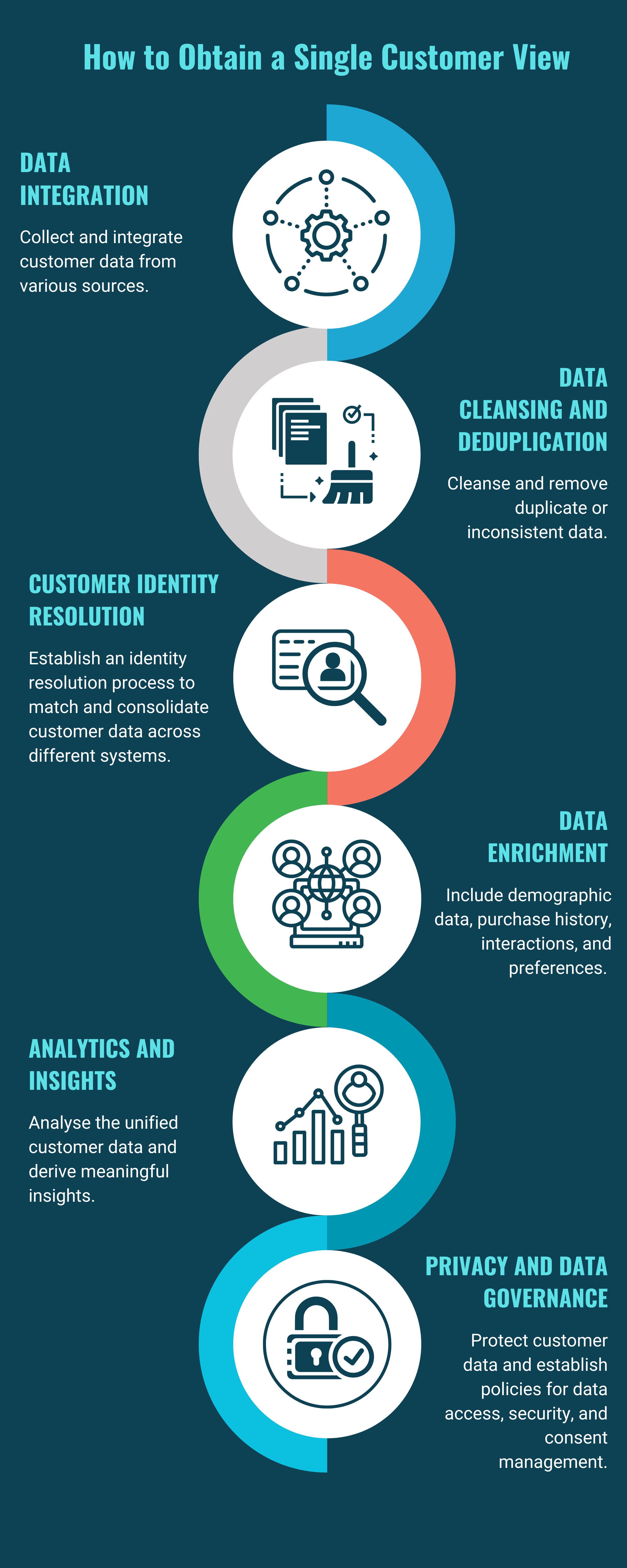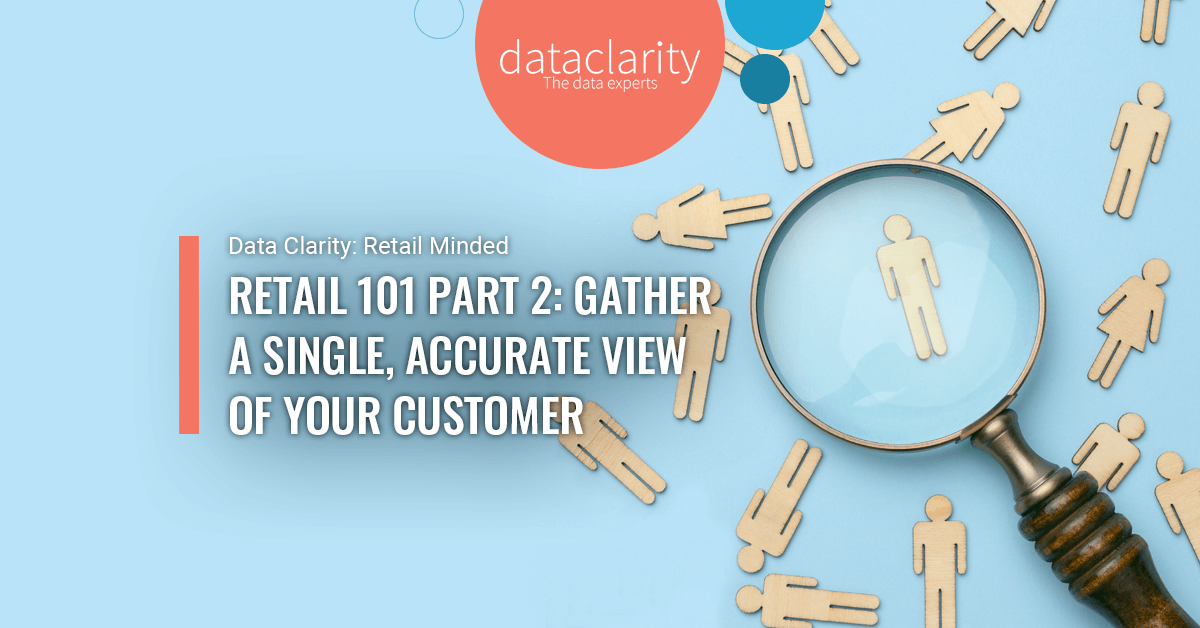Retail 101 Part 2: Gather a Single, Accurate View of your Customer
18th May 2023
Understand the value of your data. In this second part of our Retail 101 Series, discover effective strategies to enhance customer acquisition, retention, and engagement through achieving a single, unified view of your customer.
What is a Single Customer View?
Also known as a 360-degree view, or unified view of the customer, a single customer view (SCV) is a process to integrate, consolidate, cleanse and enhance customer data from multiple, disparate sources, both online and offline, into a single record.
Enabling you to understand every customer’s entire relationship with you, it acts as the single source of truth about your customers, providing a rich view of customers’ profiles and interactions.
Data types include:
- CRM and customer data
- Transactional Data /Behaviour data
- Contact Details
- Marketing channel interactions
- Marketing and product preferences
Where do start with achieving a Single Customer View
To attain real value out of data analytics, industries need to consider aggregating their data across disparate systems into a single, unified view throughout the organisation. Once in place, retailers will gain true insights which will help plan customer retention strategies, including personalised offers, pricing and stock decisions.
Our solution, ClarityOmnivue acts as a centralised repository for customer data to aggregate, unify and manage customer data from various sources, allowing you to create a single customer view.
To obtain a single customer view, these steps include:
- Collect and integrate customer data from various sources, such as CRM systems, sales databases, marketing platforms.
- Cleanse and remove duplicate or inconsistent data to ensure data quality and accuracy, this involves identifying and merging duplicate customer records and resolving errors.
- Establish a customer Identity resolution process, both online and offline to match and consolidate customer data across different systems. This involves using unique identifiers, such as email addresses, customer IDs, or phone numbers, to link customer records and create a unified view.
- Enhance customer data with additional information like demographic data, purchase history, interactions and preferences.
- Utilise analytics tools and techniques to analyse the unified customer data and derive meaningful insights. This can help you understand customer behaviour, preferences, and trends, enabling personalized marketing campaigns and targeted customer experiences.
- Ensure compliance with data privacy regulations and implement robust data governance practices. Protect customer data and establish policies for data access, security, and consent management.

Most Importantly, why is having a Single Customer View Important?
Your SCV will become your reality. Achieving a SCV of your customers enables you to truly understand your customers and engage with them as individuals as you know who they are, their behaviours and preferences. The benefits includes:
- No more data duplication
- A better understanding of every single customer
- Improved personalisation campaigns
- Better understanding of your customers’ journeys including when, where, how and why they engage with you.
- More efficient marketing campaigns
- Segment prospects and customers more effectively
- Faster customer service inquiry resolutions
- A better user experience
It’s all about knowing your customers and building stronger relationships.
Let’s take fashion retailer Paul Smith as an example. What is the secret to their success? That’s ClarityOmnivue, that delivers true, accurate data that is utilised to create individually customised targeted marketing campaigns that are personalised and relevant for each customer.
ClarityOmnivue solves the challenges businesses face trying to mine multiple disparate data sources to deliver one 360-degee view of customers and business KPI’s.
A profitable business understands its true customer, and by using this intelligence, Paul Smith are able to create a personalised omnichannel experience for their customers whilst remaining fully transparent about data collection, privacy and usage. Plus, you can understand the actual costs and effectiveness associated with customer acquisition and retention through various channels, allowing you to optimise your spend accordingly, including the elimination of duplication and inaccurate marketing communications, further enhancing cost-effectiveness.
If you’ve missed any of these blogs from our Retail 101 series, catch up here:
Part 1: Know and reach your customers with segmentation
Part 2: Gather a single, accurate view of your customer
Part 3: The value of customer lifetime value
Part 4: Exploring the Dynamics between Product and Customer Loyalty
If you’d like to be reminded when new blog posts are published, follow us on LinkedIn.
